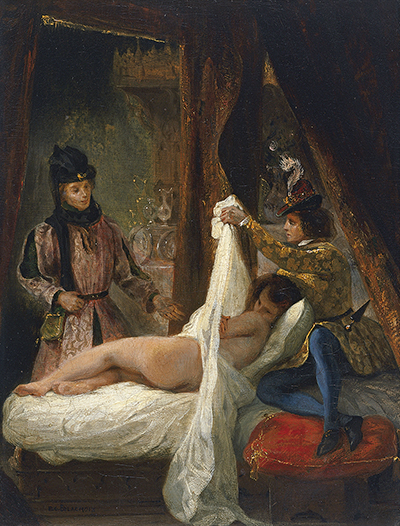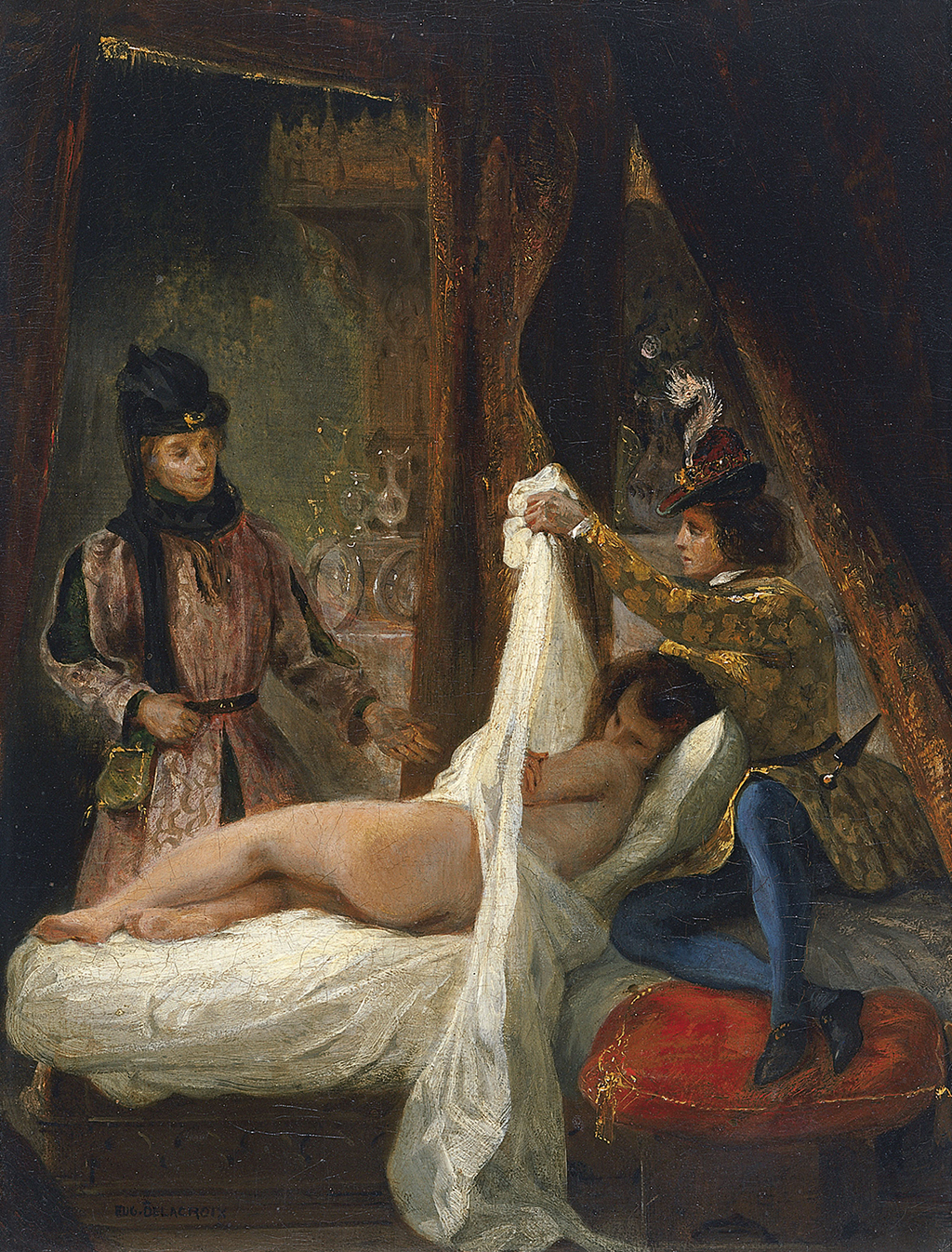This somewhat cheeky composition features the Duke of Orléans revealing part of his lover to his visitor, but carefully concealing her face so that she is not recognised by her own husband.
The Duke sits at the top of the bed, dressed in some smart and bright clothing. His lover is exposed from the waist down in an unflattering, unplanned pose. Her face is covered by a bedcloth held up by the Duke and a shadow is added by Delacroix in order to underline this point. The woman's husband looks on in amusement, completely unaware of the identity of this young woman. The type of scene brings an element of comedy and fun to the goings on of past centuries and is the sort of scenario that one might find within modern television or literature. Delacroix is more famous for his sprawling battle scenes and horse depictions but he did also create a number of charming domestic scenes from time to time. He consistently sought inspiration from literature and so academics immediately set about understanding where the content for this painting was first discovered. Scantily-clad women lying on beds have been included within a number of famous paintings over the centuries, most notably perhaps being Edouard Manet's Olympia.
Louis I, Duke of Orléans, chamberlain Albert Le Flamenc and Mariette d'Enghien are the three figures within this artwork. The tale has appeared in several items of literature, including Prosper de Barante's Histoire des ducs de Bourgogne de la maison de Valois and Brantôme's Vie des dames galantes. Academics have drawn comparisons, stylistically, with the work of both Titian and also Rubens, but many other Delacroix paintings could also have much the same connection drawn. Those great masters both used enchanting colour schemes but Rubens' flurry of activity within many of his paintings is also similar to how this Frenchman worked. They may have been several centuries apart, but the old masters were always studied in detail by those looking to learn and develop as far as possible. Delacroix himself has actually been termed the last great old master by some and he combined elements from a number of different artists into his work, covering topics such as colour, technique and also content. From this point onwards, he would then start to influence future artists himself, and so the cycle of art history continues.
This painting is now found in the impressive collection of the Thyssen-Bornemisza Museum in Madrid, acfter originally being found at the Lefèvre gallery in London up until the late 1970s. The lighting found in this piece is particularly contrasting, and the larger image below will help you to appreciate the touches of colour within certain parts of the composition. Touches are added to the over hanging curtains which surround the head of the bed and there are also similar tones of gold added to the Duke's smart jacket. White touches of paint to the bed sheets provide the strongest contrast and immediately draw your attention to the main part of the painting. The lighting could also draw some comparisons with Rembrandt van Rijn as well.





